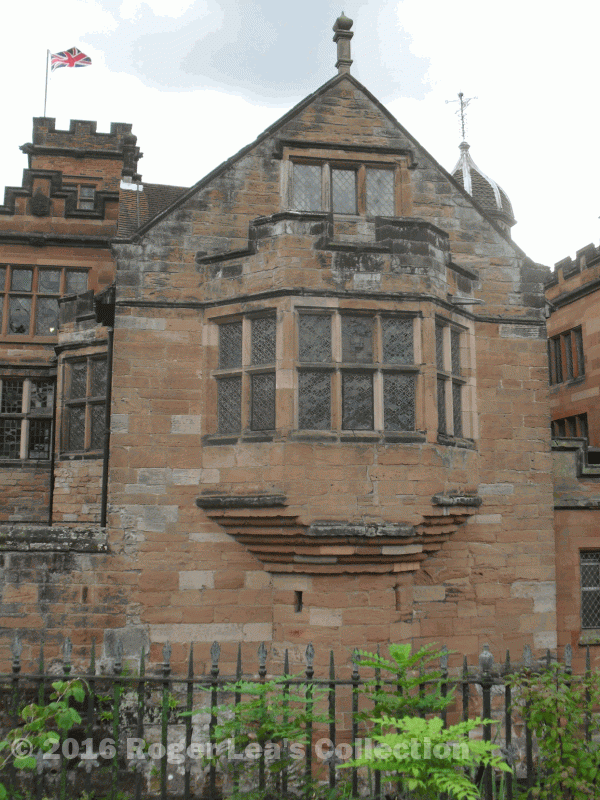George Sacheverell Esquire of New Hall Sutton Coldfield made his last will and testament on May 5th 1715 at the age of 82. It is an unusual will, reflecting the strong views of this eccentric man.
New Hall had been bought by George’s grandfather, Henry Sacheverell, in 1611, for his illegitimate son Valence, who was then only six years old - Henry was a recusant (a Roman Catholic), subject to penal taxation, and transferring property to his son reduced the tax bill. Valence was married and living at New Hall by 1628 - of his six children, only two survived, Anne, born in 1629, and George in 1632. George Sacheverell went to Oriel College, Oxford, just after the defeat of the Royalist cause in the English Civil War in 1648 - King Charles’ headquarters had been in Oxford, and Oriel College had housed the King’s Privy Council.
By 1660 Valence was dead, his widow Anne had moved to their town house (now 36 High Street), George had married Lucy Danet and was living at New Hall. George’s sister Anne was married to Charles Chadwick, living at his seat at Mavesyn Ridware north of Lichfield.
It seems likely that both Valence and George, though not themselves recusants, had strong Royalist and Roman Catholic sympathies - possibly Valence followed Charles II into exile in 1651, as there is no record of him after that date. No doubt George welcomed the Restoration of Charles II in 1660 and the papist leanings of James II, but was out of sympathy with the “Glorious Revolution” of 1688 when James II was deposed and the protestant William of Orange ascended the throne. The clergy of the Church of England were required to swear an oath of allegiance to the new King, but many refused on the grounds that they had sworn allegiance to James II, who was still alive - they were known as non-jurors, mostly high church men.
1688 was a sad year for George - his mother died, and although his sister and her husband moved to Sutton and the High Street house, she was ill and died the following year. George Sacheverell seems to have had a nervous breakdown about this time, and kept to his rooms for long periods (some say he was forcibly confined for his own safety). The evidence for this is engraved on the windows of the Great Chamber at New Hall. The large windows of this Tudor room are made up of small panes of glass, many of which have latin epigraphs written on them, dated and signed by George Sacheverell who must have used a diamond ring to scratch the glass. Most of them are of a gloomy nature, and dated 1689. Legends have grown up about a forbidden love affair, or even incest, to explain his alleged imprisonment in his own house, but these seem unlikely. His odd behaviour led people to believe that he dabbled in the occult, conjuring the devil by black magic in a grotto at New Hall. He married his second wife, Mary Wilson, in 1696.
Most of the local gentry in 1700 were Jacobites (those who supported James Stuart’s claim to the English throne) or non-jurors, meeting at a club in Coleshill to drink to the White Rose (King James III). These were Tories, their opponents being Whigs. In 1709 the Tory George Sacheverell was appointed High Sheriff of Derbyshire, and named as his chaplain the hot-headed Tory agitator Henry Sacheverell (no relation) much to the alarm of George’s nephew Charles Chadwick, a staunch Whig - bitter words were exchanged. Henry was at New Hall for several years under George’s protection, and preached a particularly inflammatory sermon at Sutton Church deploring the accession of George I, a low church monarch. The following year the first Jacobite rebellion failed.

A quotation from Ovid engraved on a window in the Princess Elizabeth Suite - it reads:-
“ Apr.29 (16)90 Omnia perdidimus tantummodo vita relicta est
Praebeat ut sensum materiamque malisG. Sacheverell”
Ovid - Letters from the Black Sea (I have lost all, only life remains, so that it may offer both sensation and material for pain) - Publius Ovidius Naso, 43 BC-AD 18, Epistulae ex Ponto, 4.16 49-52.
